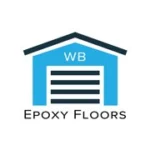Keeping your UV resistant epoxy floor in top shape doesn’t have to be a chore. With a few simple steps, you can ensure your floor looks as good as new for years to come. This guide will walk you through essential maintenance tips in an easy-to-follow, friendly manner.
1. Regular Dusting and Sweeping
Dust and debris can accumulate quickly. Regular dusting and sweeping will prevent scratches and maintain the shine of your epoxy floor.
It’s crucial to use a good-quality broom with soft bristles. A broom with stiff bristles might scratch your floor’s surface, defeating the purpose of cleaning. Consider using a microfiber dust mop for an even better result. These tools capture dust effectively without causing any damage.
To make this task a routine, plan a schedule that fits your lifestyle. Whether it’s a quick sweep daily or a thorough dusting once or twice a week, consistency is key. Set reminders if needed so that it becomes a part of your regular cleaning regimen.
2. Prompt Spills Cleanup
Quickly clean up any spills to prevent staining or damage, especially from acidic substances.
Time is of the essence when dealing with spills. The faster you act, the less likely the spill will lead to staining or damage. Keep a soft cloth or paper towels handy for immediate cleanup.
It’s also wise to avoid dragging your feet on cleaning up liquid spills such as oil, grease, or any chemicals. Such substances can potentially weaken the epoxy over time, compromising its UV-resistant qualities.
3. Mopping with Gentle Cleaners
Use a gentle floor cleaner and a soft mop to keep your floor looking new. Avoid harsh chemicals that could damage the epoxy.
Opt for a pH neutral cleaner for the best results. Harsh or acidic cleaners can deteriorate the epoxy layer and dull its sheen. A mild soap mixed with warm water usually does the trick.
Investing in a good quality mop is equally important. A microfiber mop head is ideal as it effectively picks up dirt without scratching the floor. Make sure to wring the mop thoroughly to avoid excess water standing on the epoxy surface.
Establishing a regular mopping schedule can be immensely helpful. Depending on the foot traffic, you might consider mopping once a week or every few days. This will maintain the floor’s fresh appearance and keep it free from stubborn dirt.
4. Avoiding Abrasive Tools
When cleaning, steer clear of abrasive tools like steel wool, which can scratch the epoxy surface.
Instead of abrasive tools, consider using sponges or cloths designed specifically for delicate surfaces. These tools are gentle yet effective, reducing the risk of accidental scratches.
If you encounter a stubborn stain or mark that won’t come off easily, apply a bit of elbow grease using a soft cloth soaked in a neutral cleaning solution. Gentle scrubbing is usually sufficient without damaging the epoxy.
5. Using Rugs and Mats
Place rugs and mats at entry points to catch dirt and debris before they get onto your epoxy floor.
High-traffic areas, especially entryways, benefit greatly from high-quality mats and rugs. These items trap dirt and moisture, preventing them from spreading across the floor.
Opt for rugs with non-slip backings to prevent them from moving around when stepped on. This ensures safety and minimizes additional wear and tear on your epoxy flooring.
Don’t forget to clean your rugs and mats regularly. A buildup of dirt on these surfaces can gradually transfer to the epoxy flooring, even with seemingly effective preventive measures.
6. Avoiding Heavy Dropping
Take care not to drop heavy objects on the floor, as this can cause dents or cracks.
Even though UV resistant epoxy floors are durable, they are not entirely immune to damage from impact. Always handle heavy items with care to prolong the life of your flooring.
Consider using furniture pads or protectors under heavy furniture. This prevents not only dents when moving the furniture but also scratches from any incidental dragging.
7. Applying a Floor Polish
Occasionally applying a floor polish can help maintain the shine and provide an extra layer of protection.
Choosing the right polish is crucial. Look for products specifically designed for epoxy floors to avoid incompatibility issues.
Before applying polish, ensure the floor is thoroughly cleaned and free of dust and debris. Follow the manufacturer’s instructions for the best results.
Not only does polishing protect the floor, but it also enhances its aesthetic appeal, making your living space look even more inviting.
8. Conducting Regular Inspections
Regularly inspect your floor for any signs of damage or wear, and address any issues promptly.
Spend a few minutes every month examining your floor closely. Look out for minor scratches, cracks, or any areas where the epoxy layer seems thinner.
Catching problems early can save a lot of hassle and expense down the road. Make small repairs as needed to prevent the damage from worsening.
9. Consulting Professionals for Repairs
For significant damage or wear, consult professionals who can provide expert repair and maintenance services to restore your floor’s beauty.
Professional services might include re-coating the epoxy layer, filling in any deep cracks, or addressing areas that have suffered from UV exposure over prolonged periods.
While calling in experts might seem like an additional expense, it often proves to be a worthwhile investment for maintaining the long-term beauty and functionality of your epoxy floor.






